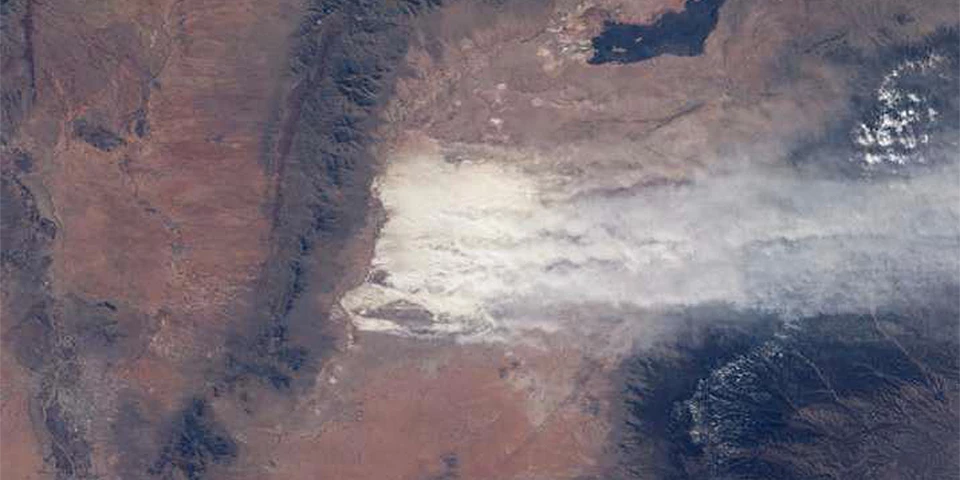
NASA Photo
The White Sands dunefield is a sensitive ecosystem that relies on moisture to keep the dunes in place. If you dig just below the dune surface you will find wet sediment, and if you dig at the base of the dunes you will find groundwater only feet below. Continued increases in temperature are expected under ongoing climate change. This may have a range of impacts on the dunes, including higher evaporation; lower water table under the dunes; hotter temperatures within the dunes; reduction of the soil moisture that stabilizes the dunes; and possibly reduced flooding events that trigger gypsum growth. As the dunes dry, the gypsum sand is increasingly able to move with the wind, and large-scale drying events have dramatic impacts on dunes and on visitor access to the dunes. The image above is was taken from space during a dry and windy period in 2008 when migrating dunes closed off the dune drive (the road that allows access into the heart of the dunes) in several locations for nearly two weeks. Understanding the relationship between drying conditions and sediment erosion is essential to protect the dunes at White Sands National Park and the amazing plants and animals that are found nowhere else on earth. To understand and plan for the future, ongoing research in the park is exploring the relationship between climate and the dunes:
|
Last updated: November 16, 2023
